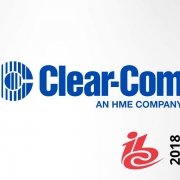VM for Remote Production
VM for Remote Production

The appeal of Virtualisation is spreading. Centralisation of infrastructure has been bubbling up in the industry since the boom of point to point fibre KVMs in the late noughties from the likes of thinklogical.
Working as a facility engineer at the time, I found these systems always looked great at trade shows but gave me the ‘heebie geebies’ when put into practice. They were a bit flaky at best, and by nature sat atop a very delicate glass single point of failure. These systems (when implemented well) gave a facility a neat way of turning edit suites into flexible access points that could be presented with whichever system the user required. However, when the scope went outside of a single building and facilities had to look to dedicated single mode fibre connections, the prohibitive cost killed a neat idea for all but a couple of Soho post houses.
So, ten years down the line we find ourselves in a brave new world where the move away from point to point transport to diversified networks, PCoIP protocols and mature virtualisation platforms have brought us back to the same question. ‘Can we rent a room in Soho and run up a suite without carting a rack of kit with us?’ And more importantly- ‘can we afford it?’ With the powerful suite of tools we have available to us now, I’d argue that it’s a yes – but not without challenges.
The industry fixation with Cloud platforms has naturally pushed early development of this model into AWS and Azure, with compelling pitches from companies like BeBop offering an on-demand instance of Maya, Blender or Adobe Creative Cloud. However, at least for the moment, this model quickly becomes comparable to the point to point fibre solution. But instead of exorbitant outlay for dark fibre, the user gets hit with an unsustainable egress bill from their cloud platform.
Tyrell work closely with animation, VFX and content management companies, who are the early adopters of cloud storage and processing. With the notable exception of burst rendering, we have seen first-hand the struggle to make a sound economic case for cloud.
Media and entertainment software companies have been much slower than more general IT providers in embracing VM platforms. We’ve only recently seen the full release of Avid Media Composer VM. Adobe have a lengthy document absolving themselves of support responsibilities in VM environments. People are being forced out of supported infrastructures in order to take advantage of the benefits of virtualisation and cloud access of workstations.
On the hardware front, video output cards are still a challenge. Unlike GPU technology, video interfaces have not yet cracked the trick of sharing resources between virtual machines. On all current VM platforms you still must dedicate a video card to a virtual machine. Drastically reducing the number of virtual machines you can fit into one box. Even if the price barrier is not a problem for you here, the current transport methods still might be.
You could employ an IP capable card to utilise SMPTE 2110 video and audio if you are within a LAN environment you manage. But, if you want to achieve true remote production over a wider network then the bandwidth and strict PTP timing SMPTE 2110 required to do so make it a non-starter.
Tyrell’s partner Intinor has achieved wonderful looking compressed pictures over public networks, both over SMTE 2022 compliant MPEG transport streams or using Intinor’s partnership with BIFROST, to give you very robust error correction. Unfortunately, the delay on these protocols (around 2-3 seconds) make it unusable for a program monitor (it’s a great solution for remote viewing though). Put bluntly, in our opinion remote editing over WAN is limited to software only editing.
At Tyrell we’re working on several projects involving virtualisation and remote production and we consistently see these projects settle in a private cloud model. That is to say the customer or a technology partner like Tyrell will own and manage the hardware in a datacentre environment (on or off-premise) and also own the network infrastructure to deliver the interface to the end user. This model pulls the data out of the scope of egress charging and allows Tyrell, as a solutions provider, to offer SLA level support.
It’s been a lot of fun designing these solutions. Interestingly we’ve seen a real demand in people moving towards virtualisation for Adobe Creative Cloud, even without support from Adobe. The feeling I get is that the advantages of centralising into a virtualised environment are beginning to outweigh the anxiety of being outside manufacturer support. It’s really satisfying that the expertise we have in our tech department at Tyrell is being seen as a viable support structure for these projects by our partners.
Thanks for reading,
Greg Abell











